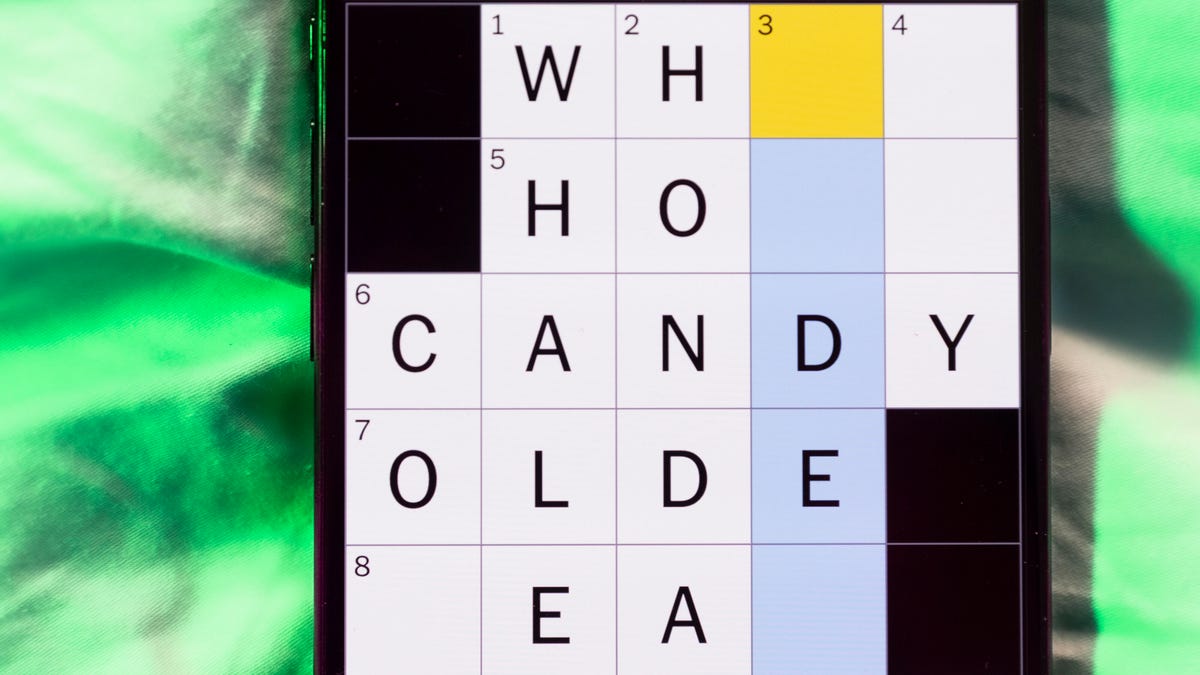Technologies
Hogwarts Legacy Rekindles That Harry Potter Magic
Commentary: The game lets you dive into an unseen era of the wizarding world, and it’s a joy to explore.

Playing Hogwarts Legacy is a reminder that few fictional worlds are as bewitching as Harry Potter’s. In 1998, my Mum handed me a copy of Philosopher’s Stone — Sorcerer’s Stone in the US — and that first chapter sucked me right in its magical universe. I was hooked for life.
Or so I thought. After the core book series wrapped up and there were no more movie adaptations coming, my emotional connection diminished. The overstuffed spinoffs, along with the controversy surrounding author J.K. Rowling, sucked the remaining fun out of the franchise, and I guessed it was time to move on.
All that baggage fell away as soon as I started Hogwarts Legacy, which hits PS5, Xbox Series X|S and PC on Friday. (It’ll come to other consoles in the coming months.) This open-world action RPG game, developed by Avalanche Software, is designed to let us live out our fantasy of enrolling at the iconic School of Witchcraft and Wizardry as a new student.
Having played the PS5 version for 10 hours, it captures the wonder of the early books, with an intriguing original narrative, engagingly varied gameplay and intricately designed world to explore.
Back to basics
The game sidesteps the narrative restrictions of Harry’s story by jumping way back in the timeline, to the 1890s. After creating your character, you’re whisked off on a brief opening adventure before reaching the Hogwarts School of Witchcraft and Wizardry.
Even though you’re a new student, you’re starting your magical career a little late and enroll as a fifth year. That’s presumably because having a wide-eyed first year, just 11 years old, explore dangerous caves, learn dangerous spells and battle dark wizards would feel kinda weird.
The customization options are a key element in living out your wizarding world fantasy, and they’re a joy. You can choose your character’s gender and appearance, pick and alter your wand (don’t worry, the one you start the game with is a loaner) and broom.
You also get sorted into Hogwarts house (Slytherin FTW) based on a series of questions shortly after arriving at the school, but you can have a do-over if the initial selection isn’t to your liking.
The house you end up in doesn’t seem to change much beyond the common room, your uniform and some throwaway lines. Though teachers mention house points in some classes, you won’t actually be competing for them in the game.
Your education is occasionally interrupted by the main story, which focuses on your connection to mysterious ancient magic and a sinister dark wizard in league with the intense leader of a goblin rebellion — these baddies sport the excellent names of Victor Rookwood and Ranrok, respectively. It’s an intriguing narrative that expands this universe’s lore nicely, especially when it hints at events further back in the timeline.
Living in a wizarding world
The development team’s love for Harry Potter is apparent in every aspect of Hogwarts Legacy, but shines most brightly in the world and its characters. Every teacher, student and local feels distinct and real, with a peppering of familiar names like Weasley and Black to make fans feel comfortable.
Each character is richly written, cleverly voiced — Simon Pegg plays the unpleasant headmaster — and visually diverse, so talking to them and learning about their backgrounds is fascinating (it’s frustrating that you can’t pause during cutscenes though). This characterisation is weaved into the main story and side quests they offer, which range from investigating one of the castle’s mysteries, sneakily grabbing potion ingredients or wandering into a dangerous cave.
These are varied and fun in terms of gameplay, exploration and puzzle-solving, but feel even more worthwhile since they present opportunities to learn more about the quest-givers and world. And getting into teenage tomfoolery like sneaking into the library in the dead of night, with the help of an invisibility charm, just feels like vintage Harry Potter.
Your customized avatar’s voice acting is solid, but occasionally a bit flat — like you’re overly polite or reserved (which is preferable to listening to a realistic teenager). The character models are convincing enough, but the eyes sometimes move unnaturally and feel unnerving.
The world is sumptuously designed too, particularly in the beautifully gothic Hogwarts with its moving paintings, chatty gargoyles and fascinating student banter. Every inch is begging to be explored, with heaps of collectibles and Easter eggs to discover — a hint of the John Williams theme plays when you pick up certain items, and it’s deeply satisfying. The nearby village of Hogsmeade isn’t quite as big, but still densely packed with fun diversions.
The colorful rolling hills, plains and hamlets that make up the rest of the world can feel a little bland by comparison, despite their Elder Scrolls vibes.
The game’s technical limitations are occasionally evident as you dash around the environment too; sometimes assets will load at the edge of your screen and doors will appear to be stuck as the area beyond loads. It never felt game-breaking, but might briefly shake your sense of immersion.
Tricks of the magical trade
The multifaceted nature of your wizarding unfolds gradually through Hogwarts Legacy’s early hours. Your character starts out with the most basic dueling skills and spells, but the way you flick out spells with your wand gives combat a unique flow and sense of kineticism.
You block incoming attacks with a magical shield and dodge bigger ones — similar to the combat seen in the Batman: Arkham and Spider-Man games, with a sorcery aesthetic. It’s immediately gratifying, to the point where you’ll be hankering for magical battles.
Once you get to Hogwarts, you’ll learn new spells and skills in classes like Defense Against the Dark Arts, Potions and Herbology. Crucially, the flow of quests gives you time to get comfortable with each new ability before introducing another — you’ll attend a class and then use what you’ve learnt in a few story missions or side quests.
It encourages the use of every tool in your arsenal, instead getting comfortable with a few basic combos and using them to get through every battle. You’ll be playing for a few hours before the skill trees are unlocked, but you’ll likely have a sense of your preferred combat style by then. Pretty much everything you do gives you experience points too, so you’ll level up at a steady clip.
There’s also a constant flow of new gear that’ll enhance your attack and defense, in addition to changing your character’s look. You can also apply the appearance of any previous clothing to new ones, so you aren’t stuck looking ridiculous just because a certain item has higher stats.
Annoyingly, inventory limits add needless friction to exploration — you can find new gear but be unable to pick it up. It’s irritating to have to fast travel to Hogsmeade to sell off excess items while wandering around the castle. You can increase your inventory with certain side quests, at least.
A joyous school reunion
Thankfully, Hogwarts Legacy doesn’t lean too hard into its school setting — you won’t have to adhere to a rigid schedule. Instead, you attend class to advance the narrative and add new gameplay elements rather than going because you have to.
The world opens up in a big way once you finish your first flying lesson and get your own broom. There’s a bit of a learning curve to soaring above it all, but it’s exhilarating and highlights the scope of the playing area.
Hogwarts Legacy has the same magic as the first book’s opening chapter, letting you explore a beautifully realized world, meet a fascinating cast of characters and embark on your own wizarding career. It’s the Harry Potter game fans have been dreaming of for decades.
Technologies
Today’s NYT Mini Crossword Answers for Saturday, Nov. 29
Here are the answers for The New York Times Mini Crossword for Nov. 29.

Looking for the most recent Mini Crossword answer? Click here for today’s Mini Crossword hints, as well as our daily answers and hints for The New York Times Wordle, Strands, Connections and Connections: Sports Edition puzzles.
Need some help with today’s Mini Crossword? It’s Saturday, so it’s a long one. Read on for all the answers. And if you could use some hints and guidance for daily solving, check out our Mini Crossword tips.
If you’re looking for today’s Wordle, Connections, Connections: Sports Edition and Strands answers, you can visit CNET’s NYT puzzle hints page.
Read more: Tips and Tricks for Solving The New York Times Mini Crossword
Let’s get to those Mini Crossword clues and answers.
Mini across clues and answers
1A clue: Hockey disks
Answer: PUCKS
6A clue: Signature headwear for Mr. Monopoly
Answer: TOPHAT
7A clue: Seedy establishment?
Answer: NURSERY
8A clue: Bioweapon at the center of a 2001 envelope scare
Answer: ANTHRAX
9A clue: Cleverly skillful
Answer: ADROIT
10A clue: Sleeping enclosure for a pet dog
Answer: CRATE
11A clue: Picks up the tab
Answer: PAYS
Mini down clues and answers
1D clue: Play, as a film character
Answer: PORTRAY
2D clue: Ultimate consequences
Answer: UPSHOTS
3D clue: Sweetheart, in French
Answer: CHERIE
4D clue: 24-___ gold
Answer: KARAT
5D clue: River in which Achilles was dipped (except for his heel!)
Answer: STYX
6D clue: Frozen landscape
Answer: TUNDRA
7D clue: Civil rights org. co-founded by W.E.B. Du Bois
Answer: NAACP
Don’t miss any of our unbiased tech content and lab-based reviews. Add CNET as a preferred Google source.
Technologies
Repair Your Electronics at Home With This Rare Black Friday Discount on the iFixit Pro Tech Go Toolkit
This toolkit rarely goes on sale, so take advantage of this opportunity to snag it for only $40.

While Black Friday is an excellent time to replace old smartphones or broken laptops at a discount, not everyone is looking to splurge on new tech right now. If you’re shopping on a budget, or simply like the devices that you have and aren’t ready for an upgrade, investing in an electronics repair kit may be a wise option. We’ve spotted a discount on the iFixit Pro Tech Go tech toolkit, bringing its price down to just $40. But don’t delay, Black Friday is in its final hours and this kit rarely goes on sale.
The iFixit Pro Tech Go kit can be used to open up and repair a wide range of electronics, including smartphones, laptops, gaming consoles, and smart home devices for DIY repairs like battery or screen replacements. The kit has a 32-bit Moray driver kit, an opening tool, a suction handle, a jimmy, a spudger and angled tweezer to carefully open your devices.
Don’t miss any of our unbiased tech content and lab-based reviews. Add CNET as a preferred Google source.
Repairing your own tech can save you hundreds or even thousands of dollars. It also reduces e-waste by helping your devices last longer rather than throwing them away over minor issue. As of this year, all 50 states have introduced right-to-repair legislation designed to give people a legal right to fix their own tech, and several states have already signed it into law.
You can check out more deals from iFixIt now on Amazon. Plus, for other budget buys, check out our roundup of the best Black Friday deals under $100.
MOBILE DEALS OF THE WEEK
-
$749 (save $250)
-
$475 (save $175)
-
$499 (save $300)
-
$900 (save $400)
Why this deal matters
This is a record low price on a repair kit that rarely goes on sale. While we did see a modest discount on the iFixit Pro Tech Go toolkit during Amazon Prime Day in July, it was not marked down for October Prime Day or other sales such as Memorial Day or Labor Day. As such, it’s fairly unlikely that we’ll see it go on sale again this season, so this might be your last chance to get the toolkit for only $40.
Join Our Daily Deals Text Group!
Get hand-picked deals from CNET shopping experts straight to your phone.
By signing up, you confirm you are 16+ and agree to receive recurring marketing messages at the phone number provided. Consent is not a condition of purchase. Reply STOP to unsubscribe. Msg & data rates may apply. View our Privacy Policy and Terms of Use.
Technologies
Don’t Say Goodbye to Black Friday Yet. These Rare Apple Discounts Are Still Going Strong
-

 Technologies3 года ago
Technologies3 года agoTech Companies Need to Be Held Accountable for Security, Experts Say
-

 Technologies3 года ago
Technologies3 года agoBest Handheld Game Console in 2023
-

 Technologies3 года ago
Technologies3 года agoTighten Up Your VR Game With the Best Head Straps for Quest 2
-

 Technologies4 года ago
Technologies4 года agoBlack Friday 2021: The best deals on TVs, headphones, kitchenware, and more
-

 Technologies4 года ago
Technologies4 года agoVerum, Wickr and Threema: next generation secured messengers
-

 Technologies4 года ago
Technologies4 года agoGoogle to require vaccinations as Silicon Valley rethinks return-to-office policies
-

 Technologies4 года ago
Technologies4 года agoOlivia Harlan Dekker for Verum Messenger
-

 Technologies4 года ago
Technologies4 года agoiPhone 13 event: How to watch Apple’s big announcement tomorrow
